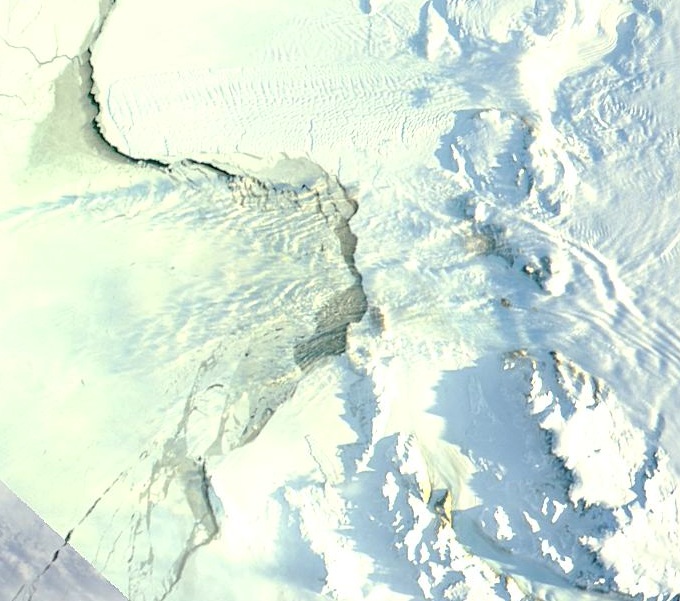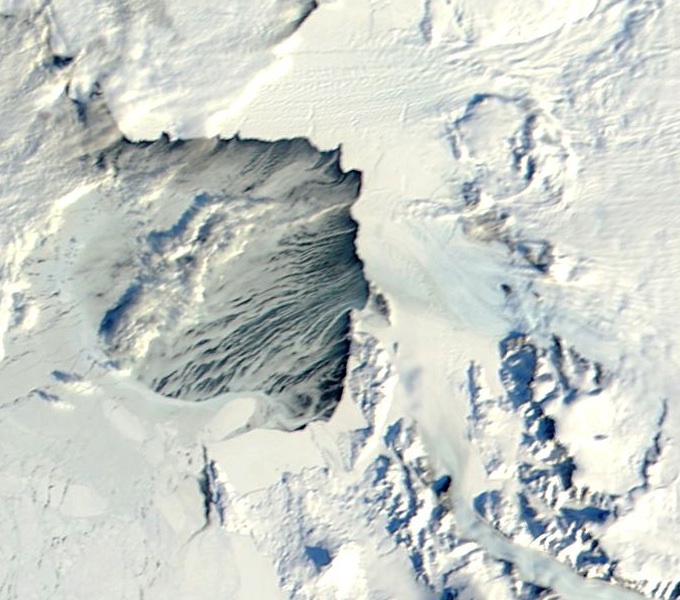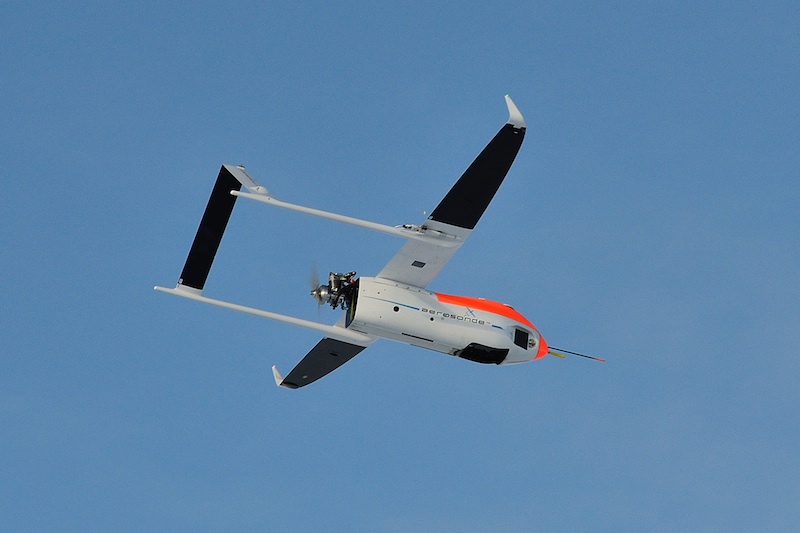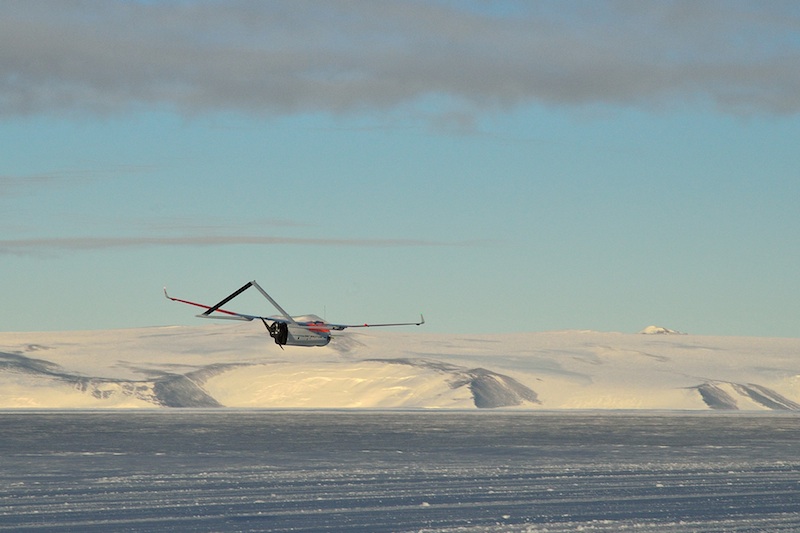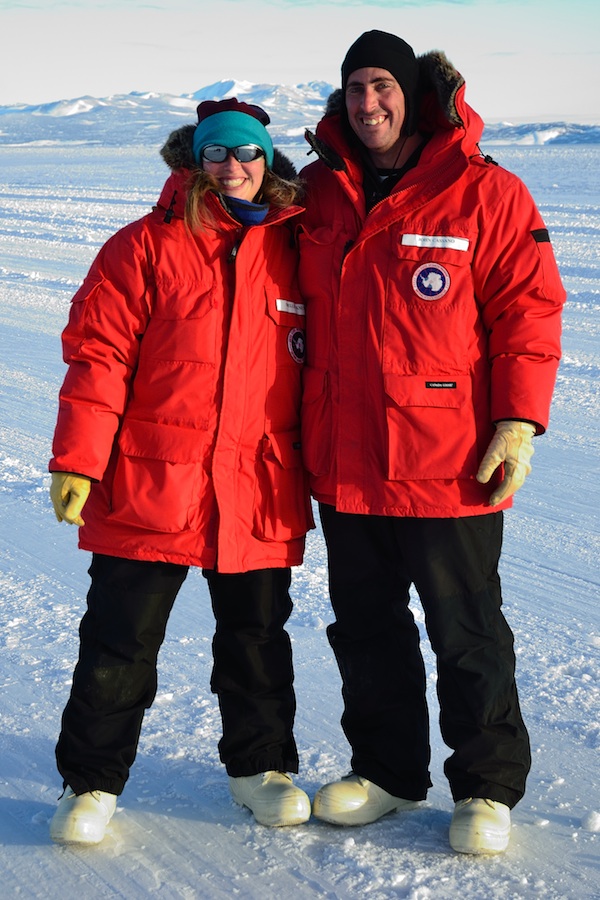Since my last blog post we’ve been busy flying our Aerosondes to Terra Nova Bay. After our first successful flights on the night of the 18th we launched two more Aerosondes to Terra Nova Bay for overnight flights on the 19th. All was going well with these flights until the generator belt on one of the planes broke. Without the generator belt the battery that powers the UAV avionics (autopilot) would quickly die and we had to ditch the plane in the ocean. The other plane returned safely on the morning of the 20th. The generator belt failure was likely due to the cold conditions which make the belts brittle. In 2009 we had a generator belt break, but since this occurred right after take off we were able to land the plane safely before the battery died. With a 3+ hour return flight back from Terra Nova Bay we didn’t have that option this time.
Three days later we were back in the air with two more planes going to Terra Nova Bay. The set of flights we did starting on the 18th and ending with the flights on the 22nd observed the Terra Nova Bay polynya from the start of a polynya event, as the sea ice first gets blown away from the coast, to a fully opened polynya on the 22nd. The data we collected on these flights looks really good and will give us some additional, and quite different cases, to look at compared to the data we collected in 2009.
In this sequence of satellite images you can see the polynya, which shows up as the dark portion in the middle of each image, gradually becoming larger. The white streaks across the polynya are bands of sea ice being blown away from the coast.
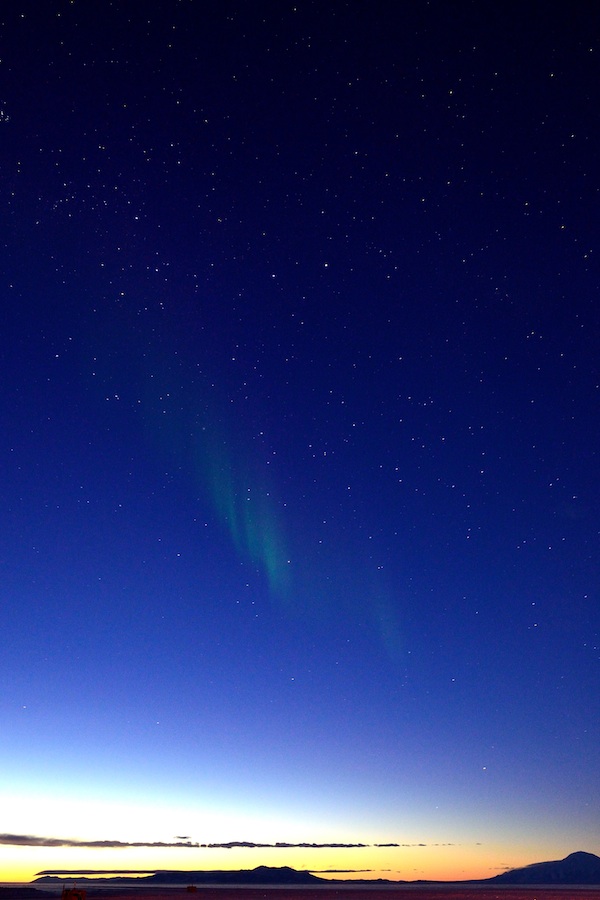
The nights are getting noticeably less dark. This photo was taken at midnight on the 23rd but the southern horizon is still lit by the sun, which is just below the horizon. Despite the not totally dark sky we were still able to see a faint display of the Southern Lights.
We completed our last Aerosonde flights yesterday, capping a long two days. On Tuesday (25 September) we launched two Aerosondes to Terra Nova Bay at 2:30 and 4:30 PM. These were our seventh and eighth science flights to Terra Nova Bay of the season. Shelley and I stayed up all night watching the flights and giving directions to Paul and Nick who did the actual flying. The planes started back to the Pegasus runway just after 2AM and I managed to get a quick 2 hour nap on the floor of my office before heading out to the runway for the landing. Both planes landed safely before 7AM. You can see a video of one of the landings here.
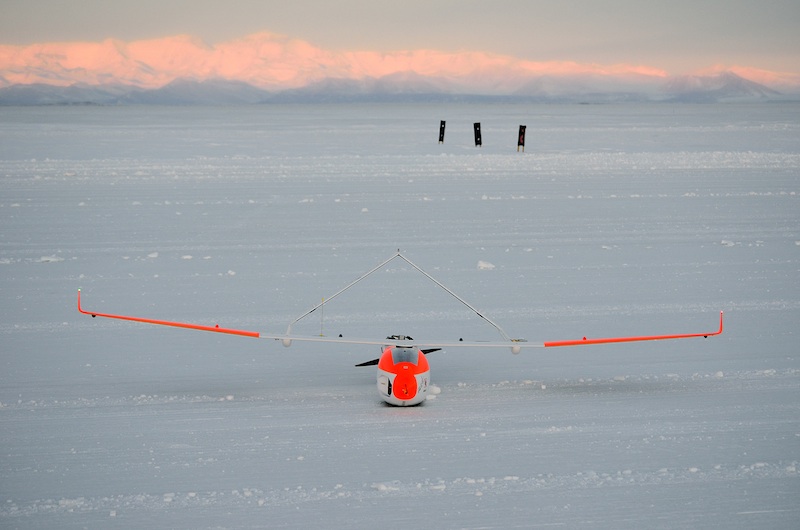
This is Aerosonde AV242 on the runway after its last flight of the season. The Royal Society Range is in the background being lit up by the early morning sun.
The Aerosonde crew quickly serviced one of the planes and we launched another science flight just before 10AM. This flight was to the Ross Sea polynya, just east of Ross Island. This polynya is much closer to the Pegasus runway, so it was a shorter flight than our Terra Nova Bay polynya flights. With this flight we collected the first 3-dimensional atmospheric data of a major Antarctic weather pattern known as the Ross Ice Shelf airstream. I’m hoping that as part of a future project we’ll collect additional data on this airstream and the polynya that forms as a result of it. The Aerosonde returned from this mission just after 4PM.
In the span of 26 hours we flew three science flights for a total of more than 36 flight hours. It was a long two days but we were all excited to get the UAV back safely from our last mission of the field season.

Paul, myself, Shelley, Nick, Peter, and Cam (from left to right) pose with the Aerosonde after the last flight. You can see that we are all very happy with the end of a successful field season.
We’re scheduled to fly back to New Zealand on Monday and are now busy packing all of our gear and getting it ready to be shipped home. Despite the difficult start to the field season we wound up having a very successful season. We flew a total of 14 flights for 168 flight hours. The total number of flights was 2 less than when we were here in 2009, but we flew nearly 40 more flight hours than we did in 2009. More importantly we doubled the number of scientifically useful flight hours by using Aerosondes with longer endurance than the ones we used in 2009. Our longest flight this season was just over 18 hours. Since we spend nearly 6 hours of each flight flying from Pegasus to Terra Nova Bay and back the longer endurance of the Aerosondes gives us more useful time at Terra Nova Bay to collect the data we need for our research.
None of the success we had would have been possible without the very hard work of Nick, Paul, Peter, and Cam from Aerosonde. They worked unbelievably long hours and worked every day that we’ve been here. They were able to trouble shoot problems as they came up and made sure we were getting the data we needed.
Shelley was a tremendous help as well. She helped me with all of the scientific aspects of the project including the forecasts for all of the flights, planning our flight strategy for each flight, and analyzing the data as we collected it. It was great to have her here as someone I could bounce ideas off of and talk through all of the problems and challenges as they came up. I’ve been very lucky to work with such an outstanding team on this project.
I’ll end this post with another beautiful Antarctic sunset.

